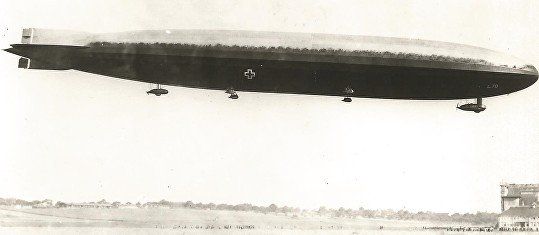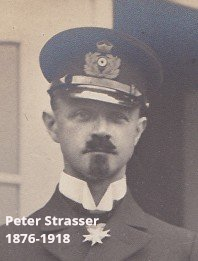ZEPPELINS, GOTHAS & 'GIANTS'
THE STORY OF BRITAIN'S FORGOTTEN BLITZ 1914-1918
5/6 August 1918
On 5 August 1918, Peter Strasser, commander of the Naval Airship Division, ordered a five Zeppelin raid targeting the Midlands or south of England, with a proviso that London could be attacked but only on Strasser’s specific orders. Strasser chose to take part in the raid on board the latest Zeppelin — L 70. The commander of the ‘flagship’ was Kapitänleutnant Johann von Lossnitzer. Although he had seen operations over the Baltic and made a couple of North Sea reconnaissance flights, it would be his first raid on Britain.
At 6.30pm the squadron was about 60 miles off the English coast in broad daylight. At 8.10pm a message from the Leman Tail lightship, about 30 miles north-east of Happisburgh on the Norfolk coast, reported the presence of three Zeppelins. Further reports confirmed that a raid looked likely and orders issued for RAF Home Defence pilots to take off. Former RNAS airfields had 14 aircraft in the air around 9.00pm, with the former RFC airfields sending up their aircraft later.
At 9.05pm, Major Egbert Cadbury and Captain Robert Leckie took off from Yarmouth in a DH4 and almost immediately spotted three Zeppelins in the clear sky about 40 miles away. They began to give chase. Cadbury, the pilot, later reported the Zeppelins were heading west at slow speed. At 10.10pm Cadbury and Leckie had climbed to 15,000 feet with L 70 still 2,000 feet higher. Ten minutes later they had clawed their way up to 16,400 feet and made an attack from almost head on. Leckie trained his Lewis gun on a point under L 70 about three-quarters of the way along the bulk of the Zeppelin and opened fire. In his report, Cadbury wrote that their bullets were ‘seen to blow a great hole in the fabric and a fire started which quickly ran along the entire length of the Zeppelin. The Zeppelin raised her bows as if in an effort to escape, then plunged seaward in a blazing mass. The airship was completely consumed in about three-quarters of a minute’. The crew of another DH4 from Yarmouth, Lieutenant R.E. Keys and Air Mechanic A.T. Harman, also claimed their attack destroyed L 70, but the authorities credited Cadbury and Leckie with the victory. Both crews also attempted attacks on Zeppelin L 65, but Cadbury and Leckie gave up after their DH4 reached its ceiling meaning Cadbury could not aim his forward-firing gun at the Zeppelin above them and Leckie’s gun jammed. For Keys and Harman, engine problems curtailed their efforts.
L 70 crashed into the sea about eight miles off Wells-next-the-Sea on the Norfolk coast. There were no survivors; Peter Strasser the chief architect of the Zeppelin campaign against Britain was dead. They would be no more air raids on Britain, this first Blitz, this largely forgotten Blitz, was over.
Follow Us
© Ian Castle 2021

